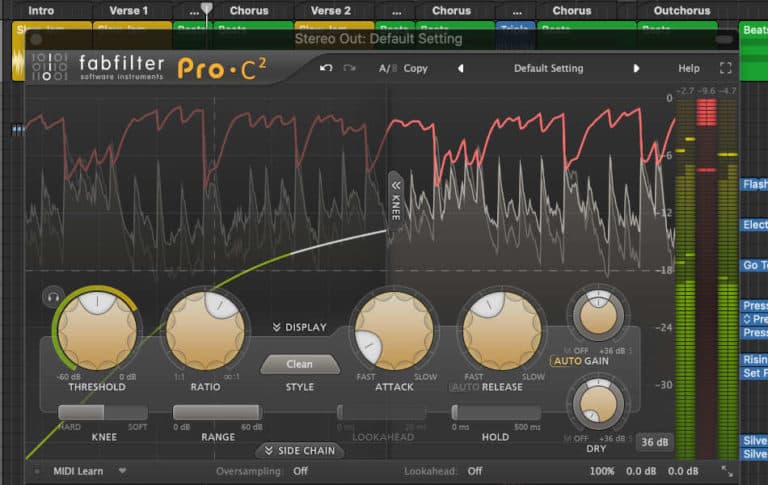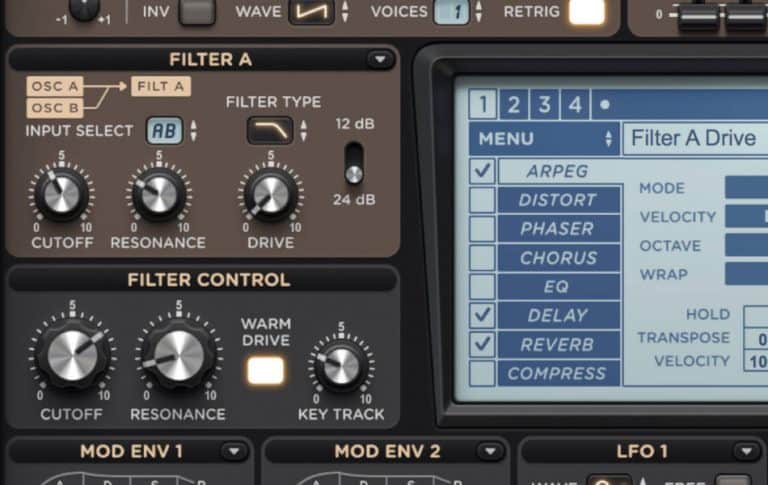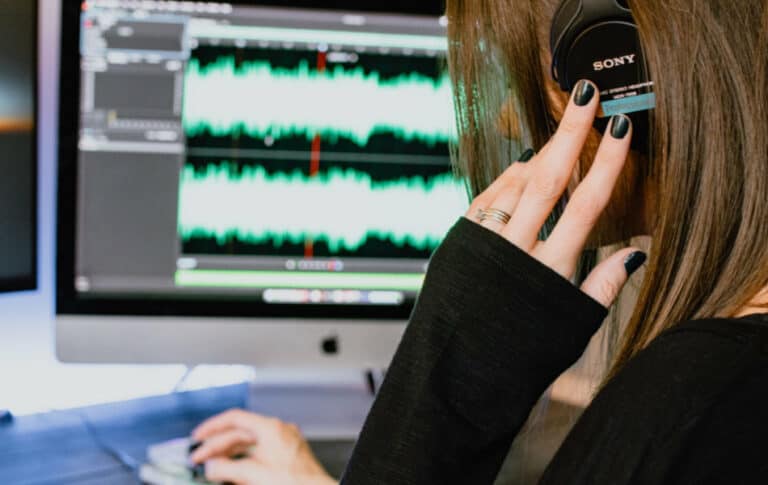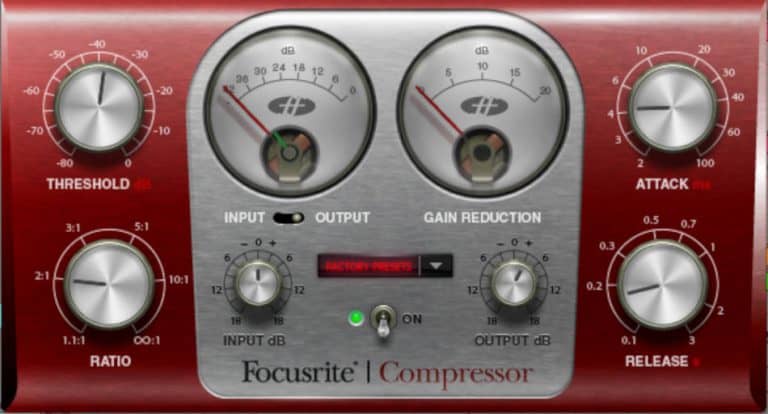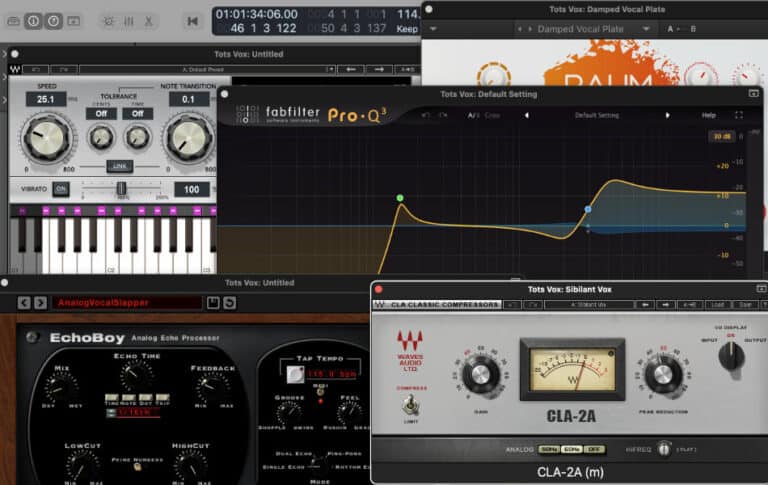Ear Training Can Make You a Better Music Producer
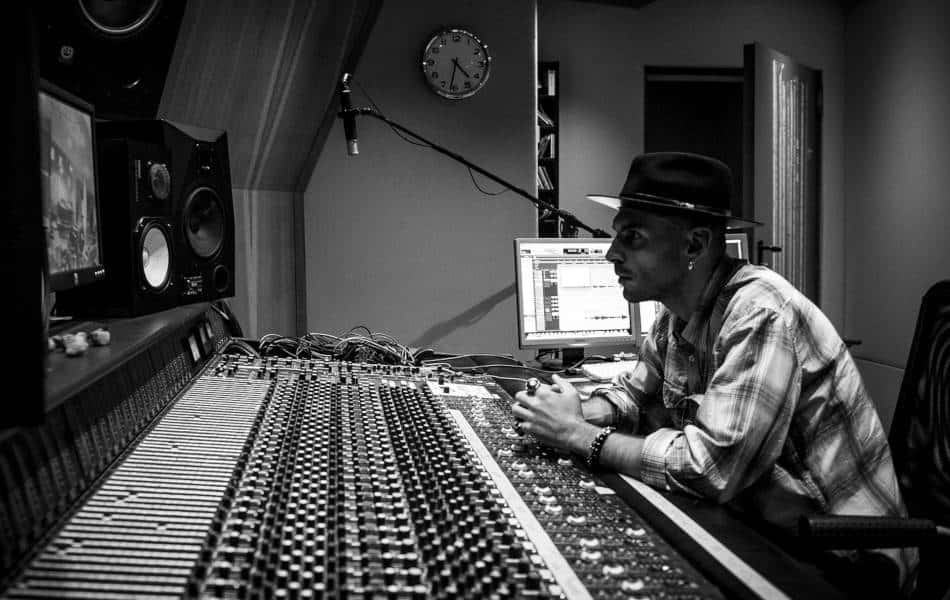
When you work with experienced musicians and music producers they often seem to have the instinctive ability to recognize things in the music that others can’t.
They can hear when someone is singing slightly flat, or when the drummer is dragging the beat, or the piano sounds too harsh. Maybe you can tell that it sounds a bit off, but you don’t know why.
It’s ear training that lets these musicians and producers hear things other people can’t hear.
They may have done their ear training without realizing it, soaking up the knowledge as they worked in music production over a long period of time. Or, they might have undertaken a specific ear training program to develop their skills.
People often think that understanding pitch, harmony, rhythm, and the overall sounds in music is just something you’re born with. They don’t think it’s a particular skill, and they don’t think it’s something you can learn.
Then they wonder why the music they produce doesn’t get the love they think it should, especially from other musicians and producers.
Music Producers with Magic Ears
You may have heard famous musicians talk about record producers with awe. They sometimes describe the producers as having amazing abilities and “magic ears”.
I have heard Rod Stewart say this about Tom Dowd, and David Bowie said it about Tony Visconti. There will be plenty of other examples of producers with magic ears.
So, wouldn’t you like to have magic ears too? Well ear training will help you to achieve this.
We’re going to start with a quick summary of how your hearing works, then move on to talk about ear training and how it can help you to be a better music producer.
How Your Ears Work
The image below shows the flow of information: vibrations in the air being translated into nervous impulses that are sent to your brain, which interprets these signals as sound.
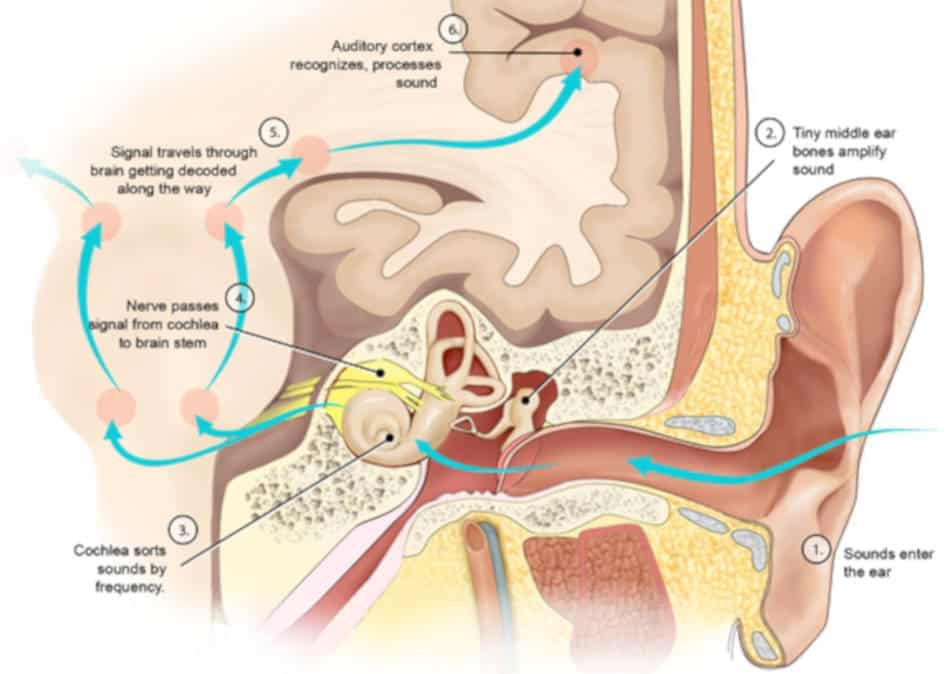
The Outer Ear
Sound waves enter your ear through the external auditory canal and hit the ear drum (also called the tympanic membrane). The sound waves cause the ear drum to vibrate according the the frequencies in the sound waves.
Middle Ear
The vibrations are transmitted through the middle ear by three tiny bones called the ossicles that are connected together. The individual bones are the malleus, incus and stapes (also called hammer, anvil and stirrup bones).
The stapes (stirrup bone) is connected to the oval window on the other side of the middle ear. The three ossicle bones transmit the vibrations from the ear drum to the oval window, which is made to vibrate.
Inner Ear
The vibrations of the oval window are transmitted into the cochlea, which looks like a snail’s shell, and is actually a tube all coiled up. The sound waves travel into this tube and stimulate tiny nerve endings, called hair cells, in the walls of the tube.
High frequency vibrations don’t travel very far into the tube of the cochlea, medium frequency vibrations travel further in, and very low frequency vibrations make it all the way to the end. This means different nerve endings are stimulated by different frequency sounds.
These little nerve endings in the tube transmit nervous impulses along the auditory nerve into the brain. The auditory cortex in the brain then translates these nervous impulses into something meaningful, which is the sound you hear.
What is coming into your ear is just vibrations. It’s only when your brain receives the nervous impulses generated by your ear that this is turned into sound. This is sometimes called sound perception
Sound Perception – We Hear Some Frequencies Louder Than Others
The range of audible frequencies is normally stated as 20Hz to 20, 000Hz (20kHz). This means we can’t hear sounds below 20Hz or sounds above 20,000Hz.
When the frequency of a sound is below 20Hz we can often feel it rather than hear it. Similarly, sounds above 20,000Hz do seem to be perceived by people (i.e. they are aware of them) even if they can’t actually hear them.
Within the audible audible range our hearing isn’t sensitive to all frequencies equally. We are more sensitive to some frequencies than to others.
We are particularly sensitive to sounds between 1,000Hz and 4,000Hz. When sounds (vibrations in the air) are produced at the same intensity right across the audible frequency range, we perceive sounds within this range to be louder.
The intensity of sound vibrations actually produced is often stated as “sound pressure level”. What is perceived by the listener can be described as “loudness”. The unit of loudness is called a “phon”.
As we saw with the example above, for the same sound pressure level, the loudness of the sound is greater between 1,000Hz and 4,000Hz.
Hearing Can Change and Be Damaged as You Get Older
As you get older you lose the ability to hear high frequency sounds. This is often associated with damage caused by exposure to a lot of noise, but is actually a natural part of getting older.
As stated above, the audible frequency range is usually quoted as 20Hz to 20,000Hz, but as you get older your ability to hear higher frequencies diminishes. The older you are, the lower is the highest frequency you can hear.
This loss of sensitivity to higher frequency sound is partly due to the fact that the nerve endings (hair cells) in the first part of the cochlea are exposed to all of the sound vibrations coming in, which can damage them.
These are the nerve endings that respond to higher frequency sound. The nerve endings deeper in the cochlea are only exposed to lower frequency sound, so there is less opportunity for damage to occur here. Low frequency hearing is less affected by loud sounds over time.
What Part of the Ear Can You Train?
It’s probably not possible to train the parts of your hearing system that bring the sound waves into you ear and stimulate nerve endings in the cochlea.
All you can really do to help with this part is to make sure you don’t have excessive ear wax, or anything else, in the external auditory canal that might block the sound waves getting to your ear drum.
The part of your hearing that you are developing with ear training is where the nervous impulses sent into your brain are processed and interpreted.
It’s actually your brain that you are training. Ear training is really about psychoacoustics and developing your ability to hear sounds and to understand the sounds you are hearing.
Psychoacoustics and Ear Training
Psychoacoustics is about how people perceive sounds. The example above where people perceive sounds within a particular frequency range as being louder is an example of psychoacoustics.
The sound isn’t actually louder in terms of sound pressure level, but since the sound is only really produced inside the listeners brain, then that’s all that matters.
Ear training helps you to develop your ability to recognise and make a distinction between different types of sound. This is important, since what you hear is affected by the way your brain processes the incoming signals.
This processing by your brain needs training otherwise it can cause problems. You have to develop these listening skills to help you during the recording, mixing and mastering process.
Here are a couple of examples of ways that your brain may distort what you are hearing, which can make music production harder. The first is called the “masking effect” and the other is called the “McGurk effect”.
Masking Effect
We often hear a number of sounds together. For example, more than one person talking or more than one musical instrument playing at the same time. Masking is an effect where one of the sounds makes it difficult to hear the other one.
If you are mixing your tracks this masking effect can make it difficult to accurately hear what is going on in one track while the other one is playing. Things would be even more difficult if several tracks are playing at the same time.
So what’s the answer? Solo the track you are making adjustments to so that you can hear it properly? Yes, but in your final mixed production all of the tracks will be playing together so tracks might sound okay on their own but sound bad when played together.
Ear training would help you to develop the ability to hear exactly what’s going on in each track while they are playing together. This means you can make adjustments to the overall mix to make it sound as good as possible.
The McGurk Effect
The McGurk effect is a strange one, but I have included it here as an example of how your ears can lead you astray. Sometimes you brain makes you hear what it thinks you should be hearing rather than the sound that is actually coming into your ears.
The best known example of the McGurk is demonstrated in the short video below. Have a look at the video before reading on so that I won’t spoil the surprise by explaining it before you see it.
So, did you watch the video? Good, then we can speak freely.
As explained in the video, because you see the person’s lips making a “fa” sound this is what you hear, even though the recording is actually playing a “ba” sound.
The McGurk effect could become a problem in music production due to the use of visual cues when recording, mixing and mastering your tracks.
Although the specifics are a little bit different, audio meters, frequency displays and other features of DAW software packages could cause you to doubt or misinterpret what you are hearing.
Ear training can help with this, so that you place more trust in what you are hearing and become less reliant on visual representations.
What Does Ear Training Involve?
Ear training often just refers to developing your ability to recognize the pitch of sounds and recognize chords. However, to develop your “ear” for better music production you also need to be able to appreciate the timbre of sounds and recognize different pitches within a mix of different sounds.
Ear training normally involves various exercises where you listen to different types of sounds and make a judgement about them. Then you are provided with the correct answer so that you can develop your listening skills.
In effect, ear training enables you to become a trained listener. You develop the ability to understand what you are listening to. You can then focus in on various aspects of the sound rather than just letting the whole thing wash over you.
This is why successful record producers have been described as having “magic ears”. They have developed the ability to hear things other people cannot, either through years of experience or specific focused ear training.
They can hear a beat that’s dragging, or hear where a singer isn’t quite in tune and correct it. They can hear where instruments are clashing in a mix and know how to fix it with EQ. Without magic ears it might sound wrong, but you probably wouldn’t know why.
Specific Types of Ear Training
Ear training is normally broken down into specific activities that target the development of specific skills. When these different skills are put together it can make you hear things very differently, and will help to make you a better music producer.
In no particular order, some of the types of ear training are; pitch and chord recognition, rhythm recognition and timbre recognition. A common theme here is recognition – knowing and understanding what you are hearing.
Pitch and Chord Recognition Training
Pitch Recognition
People sometimes think that pitch recognition involves developing “perfect pitch”. Perfect pitch is when someone can tell you what pitch a particular note is just by hearing it playing on its own.
What we are actually trying to develop with pitch recognition training is called “relative pitch”. This is where you can identify now notes are related to one another. For example, you can hear a middle C note played and identify how another note played after it is related.
With relative pitch ear training you will be able to state that the second note is a minor third, or a fifth or a flat-seventh above or below the first note, depending on what that note is.
I should just make a distinction here between notes and pitches, or tones. Musicians often refer to what is written down in sheet music as notes, while what you actually hear is referred to as a tone or a pitch. I’m not really sticking to this convention here, this is just for information.
Understanding What You Hear Can Make You a Better Music Producer
Clearly, being able to identify the relationships between notes is a very valuable skill. Once you can hear the relationships between the pitches of sounds that are actually playing, it’s much easier to imagine these sounds inside your head.
This means that you can quickly tell musicians what notes to play without having them play one after another until you hear the one you were thinking of.
If you are programming MIDI tracks it will speed the process up if you can hear the sounds in your head and draw the notes into the grid without need a lot of trial and error.
If instruments or vocalists are slightly out of tune you will be able to recognise this more easily and guide them on pitching correctly. If the inaccurate pitching has already been recorded you will be able to correct it using pitch correction software. This can be difficult, and can take a long time, if your don’t have good pitch recognitions skills.
When you are mixing your tracks one of the most used effects is EQ (equalization). This involves adjusting the levels of specific sound frequencies, and this is much easier if are able to easily hear the different frequencies within the overall sound.
Chord Recognition
Being able to identify chords that are playing is a further development of pitch recognition training.
The first stage would training that develops your ability to hear intervals. Intervals are when two notes are playing. Intervals can be melodic or harmonic.
Melodic Intervals
Melodic intervals are where the notes are played one after the other.
The pitch training outlined earlier is actually developing the ability to identify melodic intervals.
Harmonic Intervals
Harmonic intervals are where two notes are playing together. Here you are developing the ability to recognise the way the two notes interact with each other.
This is the first stage in training for chord recognition, since chords are three or more notes playing at the same time.
Chord Recognition
Once you have developed your chord recognition skills you will be able to identify the difference between chords that are major or minor, augmented or diminished, sixth or seventh, dominant seventh or suspended.
As with pitch, you aren’t really trying to recognise the actually pitch of the chord, just the type of chord and how they relate to each other. Also, as with pitch, being able to hear chords that are actually being played or imagining them inside your head can speed up your work with live musicians or when programming MIDI.
It’s not just the speed that you work at that will be improved by pitch and chord recognition training. You will also be able to hear these sounds and the way the relate inside your head, which will make you a much more creative producer.
Rhythm Recognition Training
Rhythm training can be broken down into two main parts. First, the ability to recognise different rhythms, and second the ability to play in time.
Here we are only really looking at the first one – being able to recognise rhythm. To develop the ability to play in time you need to practice with a metronome at different speeds to really lock in your timing.
Having said that, you also need to be able to tell when the tempo at which a piece of music is playing is right. Tempo is the speed at which the music is played.
Tempo is usually measured in beats per minute (BPM), and you need to listen to a lot of music to develop a feel for what is most appropriate for a particular production.
Tempo Ear Training
As a producer you need to be able to recognise the tempo at which the music is playing just by listening to it. One of the ways you can start to do this is by using a metronome app on your phone.
As you listen to a song, track or other production on speakers you can tap the beat into the metronome. The metronome will tell you what speed the song is playing at.
After you have done this enough times you will develop a feel for what speed the song is playing at and you can just confirm this with the metronome on your phone. Also, tapping the rhythm into your phone will also help to develop your ability to play (or at least tap) in time with a song as an added bonus.
Recognising Different Time Signatures
Another aspect of rhythm recognition training is being able to tell the difference between music played in different time signatures. Time signatures are usually written as two numbers, one on top of the other. Examples include, 4/4, 3/4, 6/8, 5/4 and so on.
The first number in the time signature refers to the number of beats in a bar and the bottom number tells you what type of notes are played. For example, 4/4 is four quarter notes to a bar, 3/4 is three quarter notes to a bar, and 6/8 is six eighth notes to a bar.
If you are a dance music producer you probably won’t have to worry about much other than 4/4, but in other styles of music a variety of time signatures can be used.
As your appreciation of rhythm develops you will improve your ability to tell if musicians, especially drummers, are playing in time. You will also be able to recognise instruments that are playing slightly ahead or behind the beat, which you may or may not want for your own music production.
Timbre Recognition Training
Timbre is a bit different from the other aspects of music we look at here. Melody, harmony and musical time have some formal rules that you may help to guide you but timbre doesn’t really have any rules to follow.
Timbre relates to the sound of a voice or instrument, each has its own particular sound. It’s timbre that lets you tell the difference between specific instruments.
Timbre recognition training lets you develop an appreciation of the quality of the sounds you hear. For example, you will be able to notice the subtle differences between sounds of different pianos, or the way that a room can affect the character of a sound.
One of the things that can make a big difference to the timbre of a sound is an audio filter. Subtle adjustments to the settings of an audio filter can change the emotional effect that the sound has on the listener.
When we think of audio filters we often think of synthesizer filters. However, an audio filter can be applied to an entire track to affect its timbre.
A repetitive track that doesn’t change much melodically, harmonically or rhythmically can take the listener on an exciting auditory journey just by varying the timbre over time using audio filters.
An appreciation of timbre will help you to produce music that has the right blend of timbres amongst the various sounds in your production.
Get Your Magic Ears On
This concludes our brief introduction to ear training and the ways that it can help to make you a better music producer.
If you are interested in taking this further, one of our favourite ear training programs is TrainYourEars. Year can find out more about this ear training program at the bottom of this page.
Experienced musicians and producers can make it look easy, spotting what it is about a track that isn’t right and how to fix the problem. They have spent a long time developing these skills, and with the right training you can do it too. So, get started on the road to earning your magic ears.
